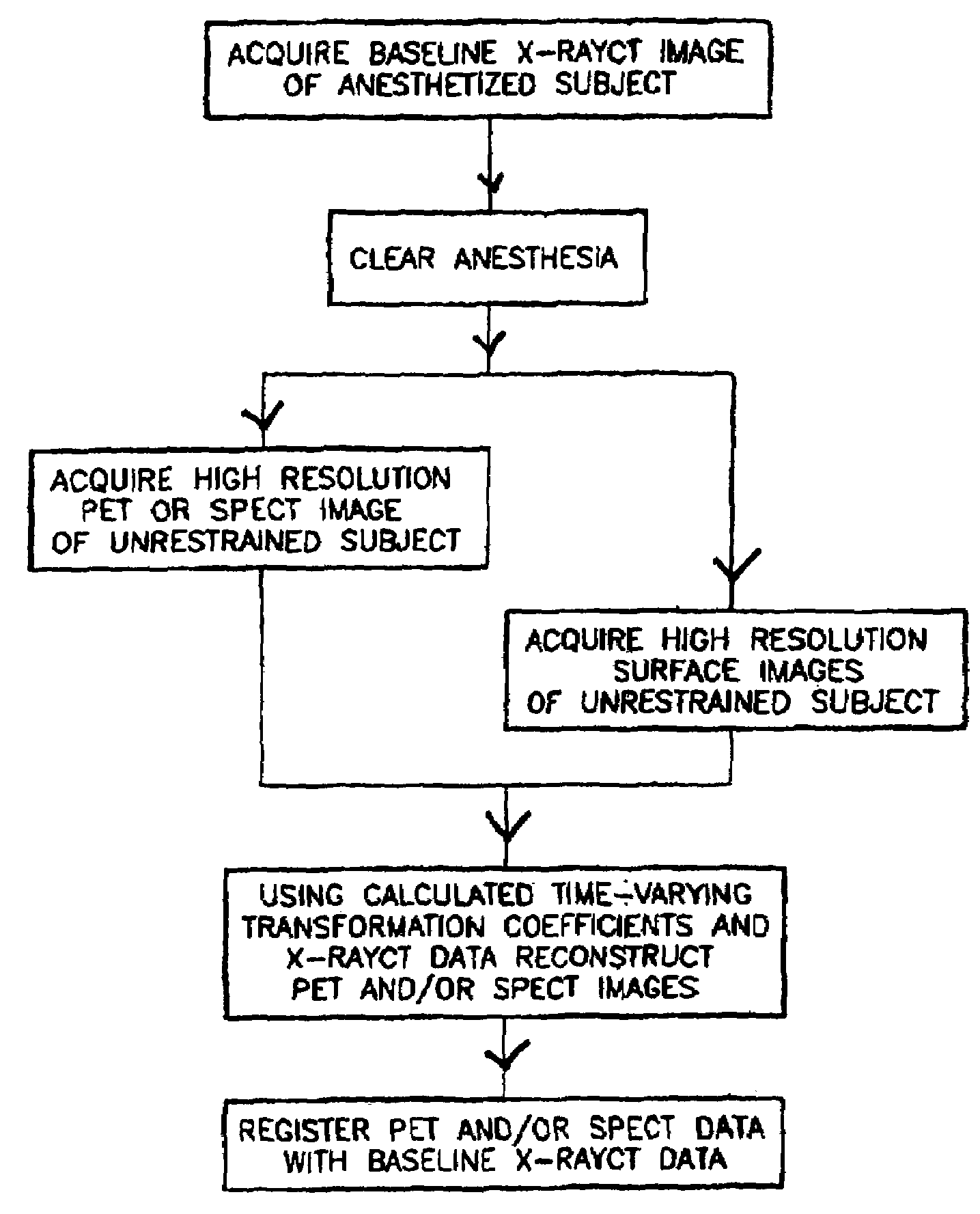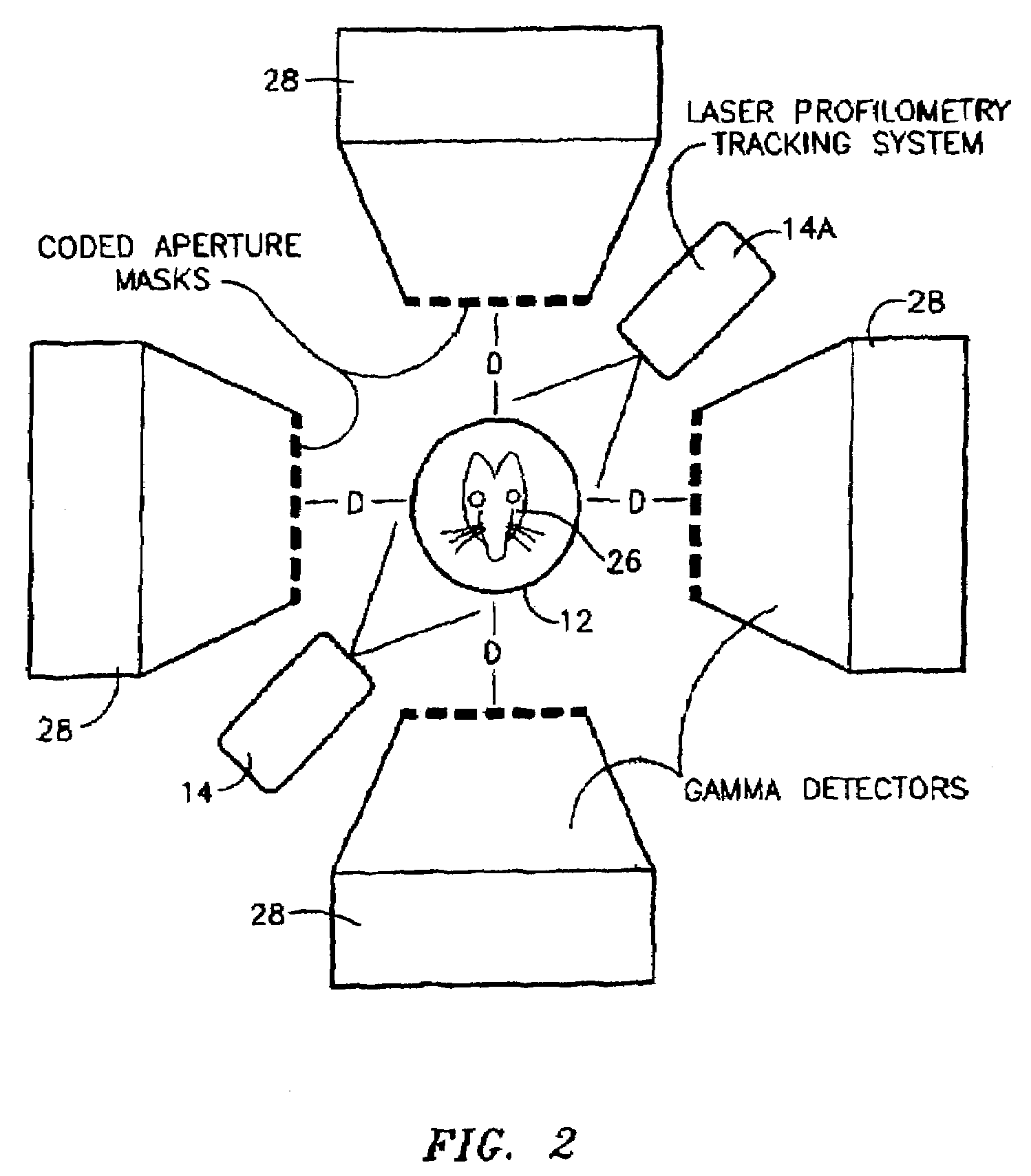Anatomic and functional imaging of tagged molecules in animals
anatomical and functional imaging technology, applied in the field of in vivo detection of tagged molecules in animals, can solve the problems of high cost in time resources and overall effort, inherently undesirable procedures, and animal death
- Summary
- Abstract
- Description
- Claims
- Application Information
AI Technical Summary
Benefits of technology
Problems solved by technology
Method used
Image
Examples
Embodiment Construction
[0015]The present invention makes use of recent advances in a large number of advanced and sophisticated technologies to provide an imaging system capable of anatomically and / or functionally imaging radioisotopes and / or optically tagged molecules in non-anesthetized and non-restrained small animals. Among the technologies used, are: 1) laser / IR tracking of the animal under study in a relatively open environment such as a tubular containment area or “burrow” or other suitable enclosure using laser / IR tracking devices capable of determining and recording the orientation of an animal under study; 2) imaging labeled biological markers using small gamma, PET or SPECT detectors; and 3) dynamically collecting and reconstructing images normalized to the placement of the radioisotope or optically labeled regions within the animal body as determined by the laser / IR orientation determining devices.
[0016]The novel method and apparatus described herein make use of the following state of the art ...
PUM
 Login to View More
Login to View More Abstract
Description
Claims
Application Information
 Login to View More
Login to View More - R&D
- Intellectual Property
- Life Sciences
- Materials
- Tech Scout
- Unparalleled Data Quality
- Higher Quality Content
- 60% Fewer Hallucinations
Browse by: Latest US Patents, China's latest patents, Technical Efficacy Thesaurus, Application Domain, Technology Topic, Popular Technical Reports.
© 2025 PatSnap. All rights reserved.Legal|Privacy policy|Modern Slavery Act Transparency Statement|Sitemap|About US| Contact US: help@patsnap.com



